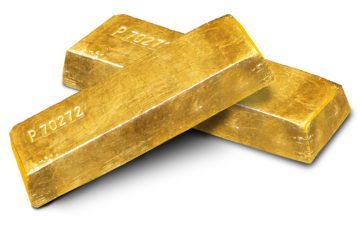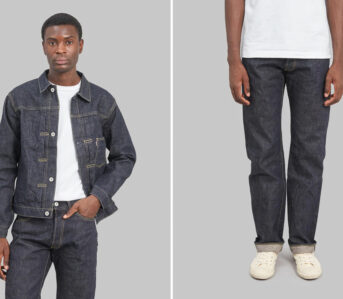Chromatic pieces of smooth glass. Like their precious stone counterparts, the history of trade beads is a dichotomy of exploitation and art, of conquest and native cultures. The interaction of European colonial powers with African and Native American tribes is best described as “complex.” Like the universe itself, our understanding of this interaction continues to expand to this today and evolves with each successive generation. After all, cultural exchanges go both ways. Exquisitely manufactured goods from Europe, which included artisanal glassware, were traded for raw materials and other resources to supply an industrializing world. In turn, everything from music to cuisine and even artistic design felt the eternal influence of indigenous peoples.
This exchange wasn’t purely transactional, however. While the old platitude that “money is the root of all evil” may ring true, the real culprit is moral bankruptcy; when suffering is inflicted on others for material gain. Trade beads — while simple and vibrant—represent human artistry, cultural expression, and the many tears of suffering shed in the hot sand.
What is a Trade Bead?
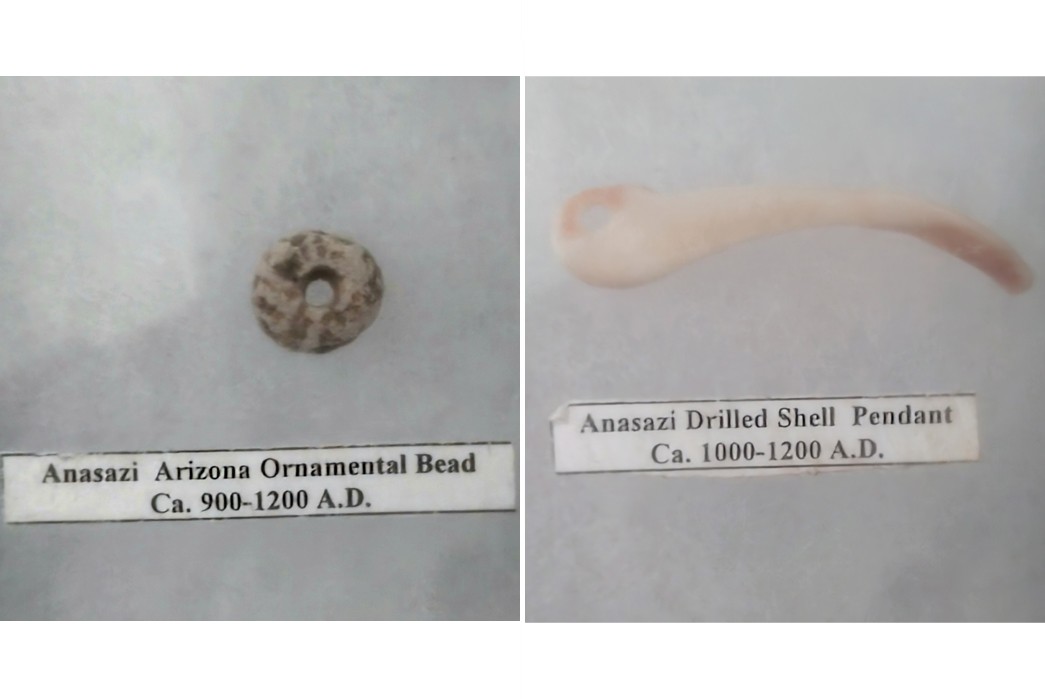
Here are some Pre-Columbian North American examples of jewelry crafted by indigenous peoples—in this case, the Anasazi or Ancestral Pueblos of the American Southwest. Images via an anonymous collector.
Defining beads and how they became symbols of commerce is a history lesson in itself. Beads, in one form or another, have been around since prehistoric times. If you enjoy modern fashion, then you have a lot to thank early cave dwellers for—many archaeologists believe that beads originated as the first form of personal adornment. The earliest likely examples were made from marine shells in Africa. In France, beads and other jewelry carved from bone were found at a prominent Neanderthal site. So important are these artifacts that bead trading may be one of the reasons that we developed spoken languages.
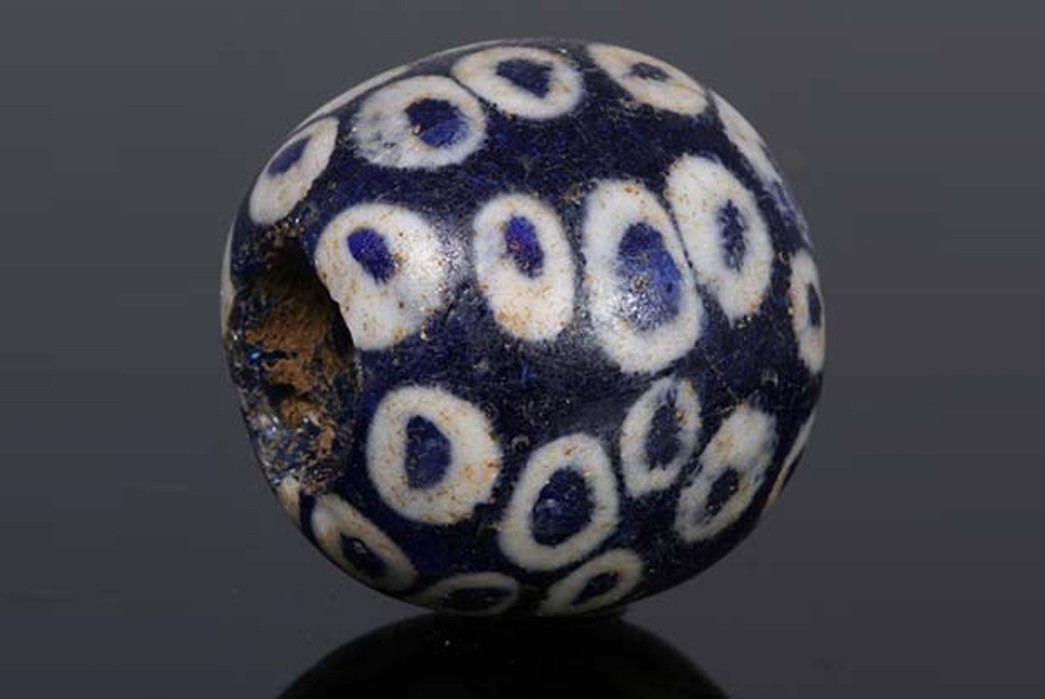
A “stratified eye” bead from ancient Greece. Image via Ancient Glass Beads.com.
Today, we typically think of ‘trade beads’ as being made from glass. The ancient Romans and Greeks were prolific bead makers and mastered the art of cutting and shaping glass like jewelers working gemstones. This was a very time-consuming process to be done with simple hand tools on such a micro level. In the 1st century B.C., glassblowing emerged in Syria (which was part of Rome at that time) and caught the sharp interest of Mediterranean craftsmen. Glassware was already coveted for many purposes and the tradition was well-established by the time Julius Caesar came to power. The blowpipe thus led to an early form of mass production. Beads of exceptional quality and uniformity, with entwined strands of colored glass, could be made on an imperial scale. The end result was a market that stretched to the far corners of the Roman world and beyond. The establishment of a glassblowing tradition in Europe forever entwined beads and global commerce into one legacy.
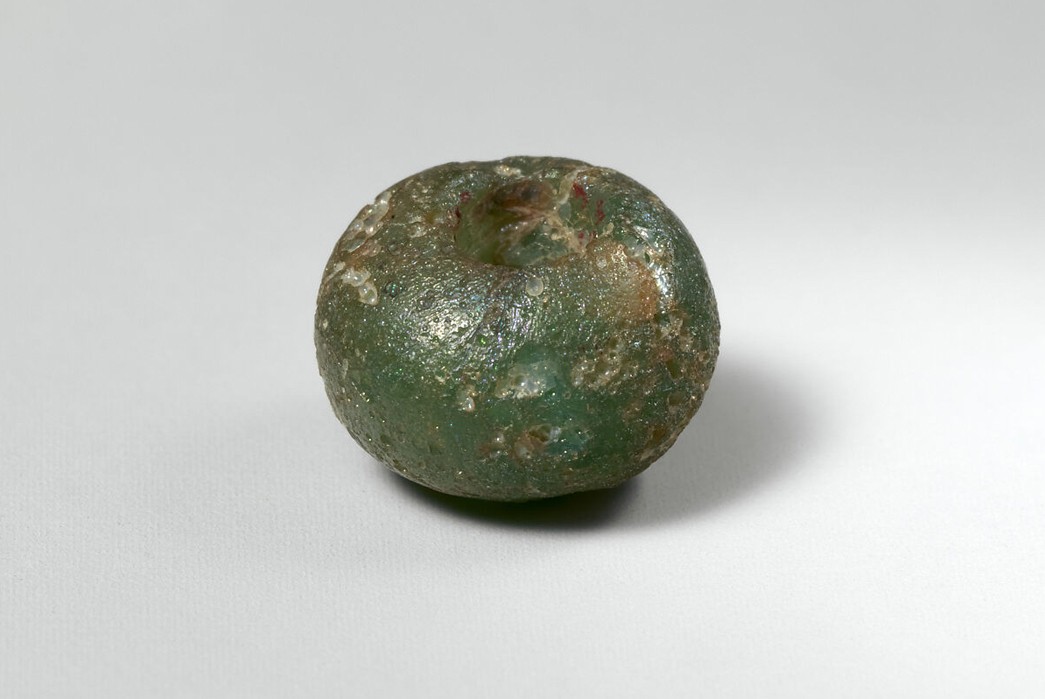
A Roman glass bead dated to the 1st-4th centuries A.D. Image via The Metropolitan Museum of Art.
Roughly a century prior to the Western Roman Empire’s fall in 476 A.D., glass beads from Portugal came to Africa. This coincided with the start of commerce that spanned the Mother Continent. Between this time and the arrival of colonial powers, indigenous bead manufacturing took root in Ghana (including the Krobo people), Nigeria, and Ethiopia.
History of the Trade Bead: Exploration and Conquest
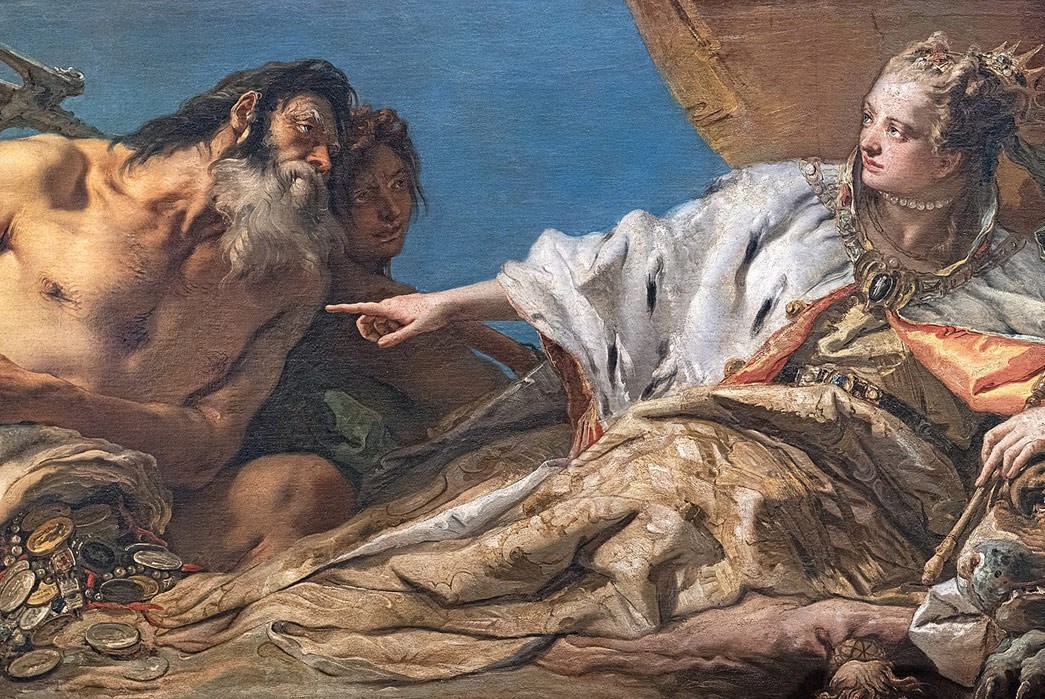
Giovanni Battista Tiepolo painted Neptune offers the wealth of the sea to Venice (1748-50). This is a heavy-handed, although poetic, reference to Venetian nautical power in the Mediterranean. Image via Didier Descouens/Wikipedia.
The torch (or blowpipe) was passed from Rome to the Republic of Venice. During the Middle Ages, this city-state transformed itself into a Mediterranean maritime empire and dominated seagoing trade in the region. A rich tradition with glass beads enabled Venetian makers to monopolize the trade winds with their superior reputation. Venetian beads also followed overland trade routes going all the way to Alaska.
The Shores of West Africa
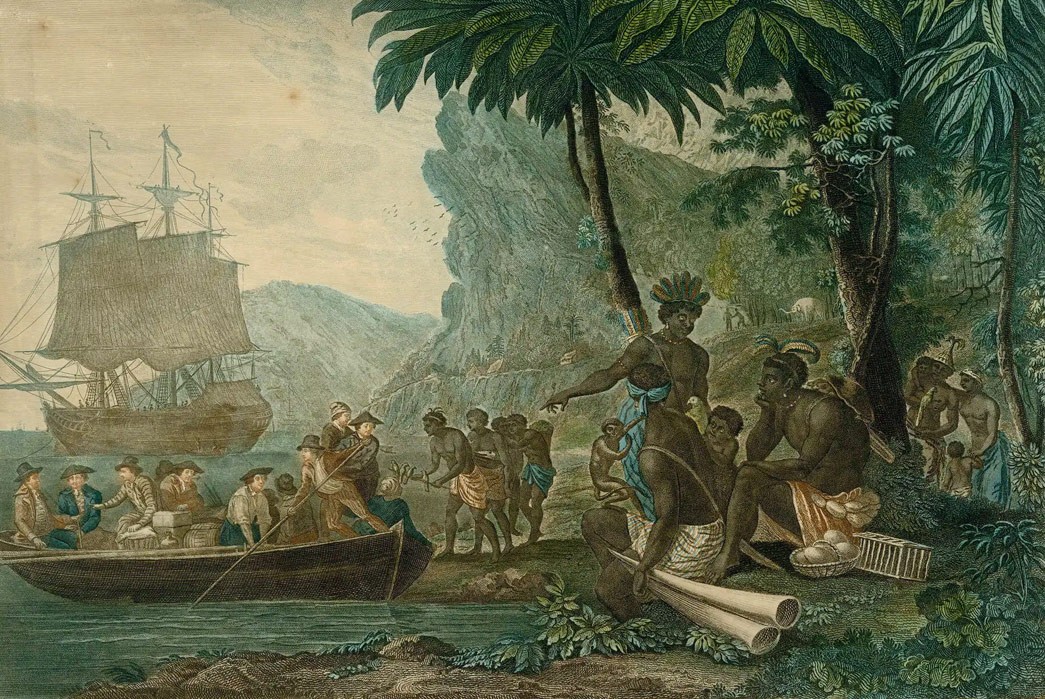
Trading along the coast of West Africa. Image via The John Carter Brown Library at Brown University/National Museum of African American History & Culture.
By the Renaissance period—specifically the 15th century—Europeans had developed a keen interest in Africa. The Portuguese led the endeavor and were the first to make incursions along the western coast. While the original goal had been to find a seagoing route to the East Indies, the prospect of finding gold, copper, spices, and ivory tempted the explorers to stake new claims. It was also during this time that the Europeans came into contact with cultural West African beads like Aggrey from Ghana. The origins of these native beads are wildly speculated over, but matter how they came to be, the newcomers collected them as tokens of trade.
Bounty and Brutality
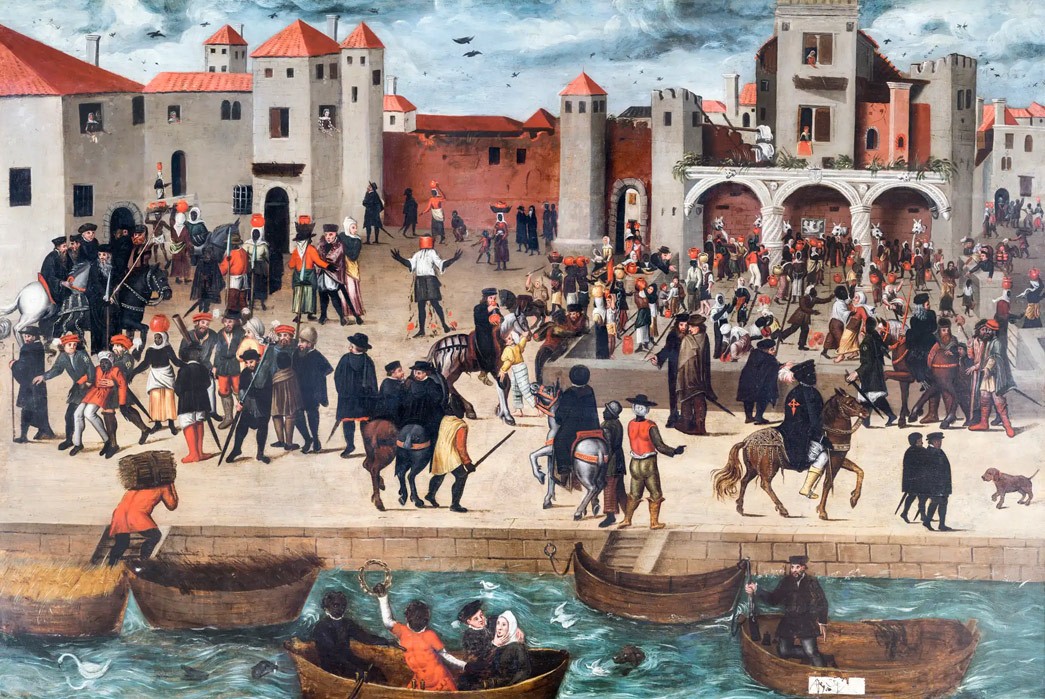
Africans, both free and enslaved, made up about 10% of the Portuguese population in the 16th century. Image via The Berardo Collection Museum/National Museum of African American History & Culture.
It was the use of trade beads to finance the Afro-European slave trade that started the complex legacy that we analyze today. Slavery existed in Africa before the explorers arrived and it was perpetuated across the Atlantic and Indian Oceans as natives were taken from their tribal lands.
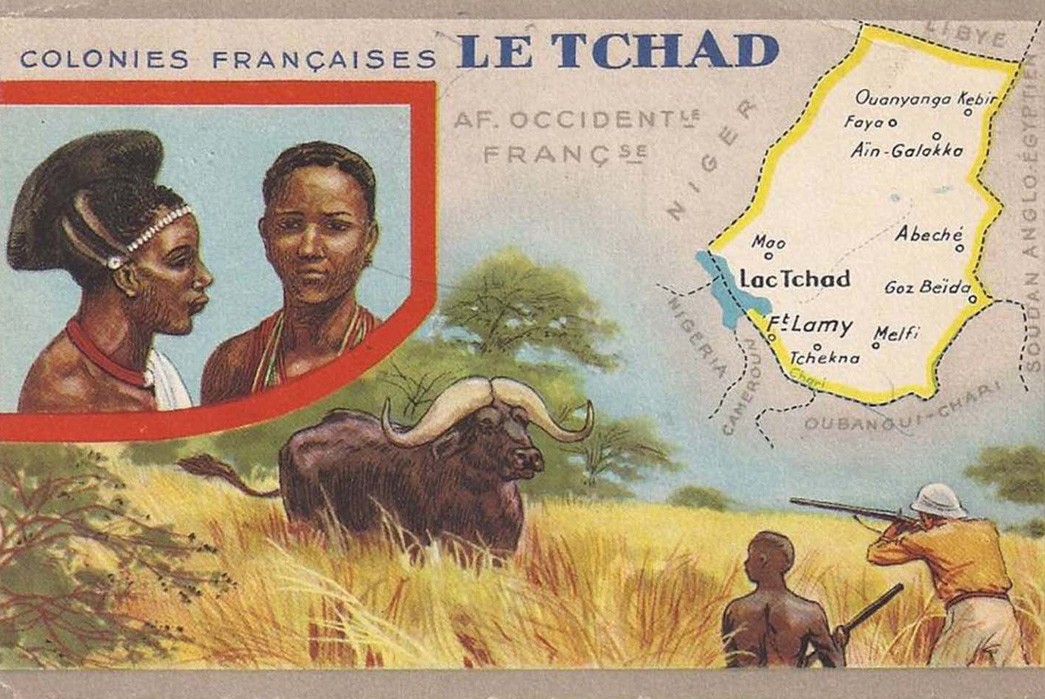
A vintage color postcard captioned “French Colonies: Chad.” Image via Rare Historical Photos.
Colonialism and tribal warfare took a heavy toll. The bead trade in Africa would last for centuries after the Portuguese first made contact (as the Dutch arrived not long after). Meanwhile, slavery persisted in other areas for decades after it was abolished in North America. To this end, 19th-century beads can be excavated along well-worn, ancient pathways on the African continent. Traders coming from the Indian Ocean to buy slaves and ivory would use beads made in Europe as the nefarious trade migrated to East Africa.
A New World with Established Cultures
The story of Christopher Columbus is well-known but perhaps not the immediate aftermath. Like across the Atlantic, Spanish and Portuguese explorers in the Americas found curious natives who presided over an immense wealth of natural resources and land. The latter was also fascinated with European manufactured goods. This trade ended up being more than they bargained for as disease and enslavement wiped out entire populations. The most stark examples of depopulation were in the Caribbean.

Discovery of the Mississippi by De Soto as painted by William H. Powell (1853). Image via Architect of the Capitol.
The same beads that were exported to Africa were likewise brought to The New World. North America became a final frontier for a plurality of colonial powers. Spain established the first permanent colony in Florida but England and France weren’t far behind. From the Eastern Seaboard to the western deserts, blown-glass beads supplanted the more traditional materials like bone, copper, and stone. European beads thus adorned everyday items used by Native Americans which included clothing.
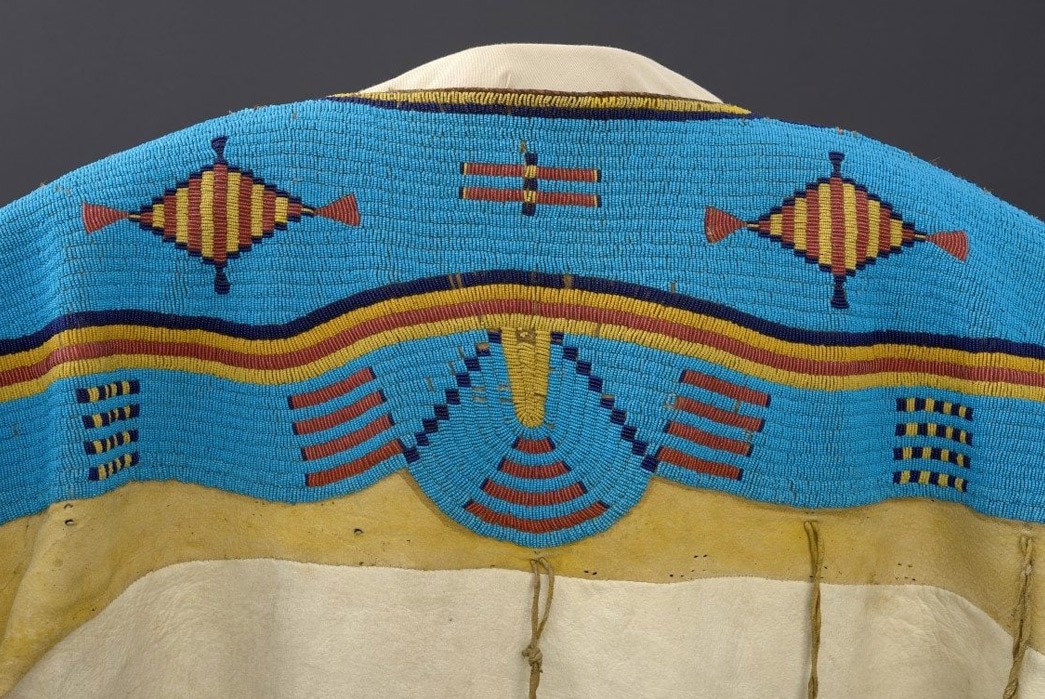
A dress from a Northern Plains tribe with glass “seed beads.” Image via The Paul Dyck Plains Indian Buffalo Culture Collection/Buffalo Bill Center of the West
Amsterdam had evolved into a bead-making powerhouse by the 17th century, feeding Dutch commercial ambitions, and even Bohemian and Moravian glass makers saw a chance to go global. Despite some robust competition, Venice defended its crystalline Murano crown. Glass beads are still part of Venice’s industry.
Legacy and Modern Makers
Trade beads are so ingrained in African and Native American cultures that a tumultuous history could not shake their importance. They are descended from mankind’s earliest fashions. With polychromatic beauty and simplicity, they lend themselves to a variety of garments, necklaces, and bracelets that hold spiritual meanings. Thus, trade beads are not a symbol of suffering—they tell a story of cultural exchanges.
They tell a story of an undying spirit.
Mikia
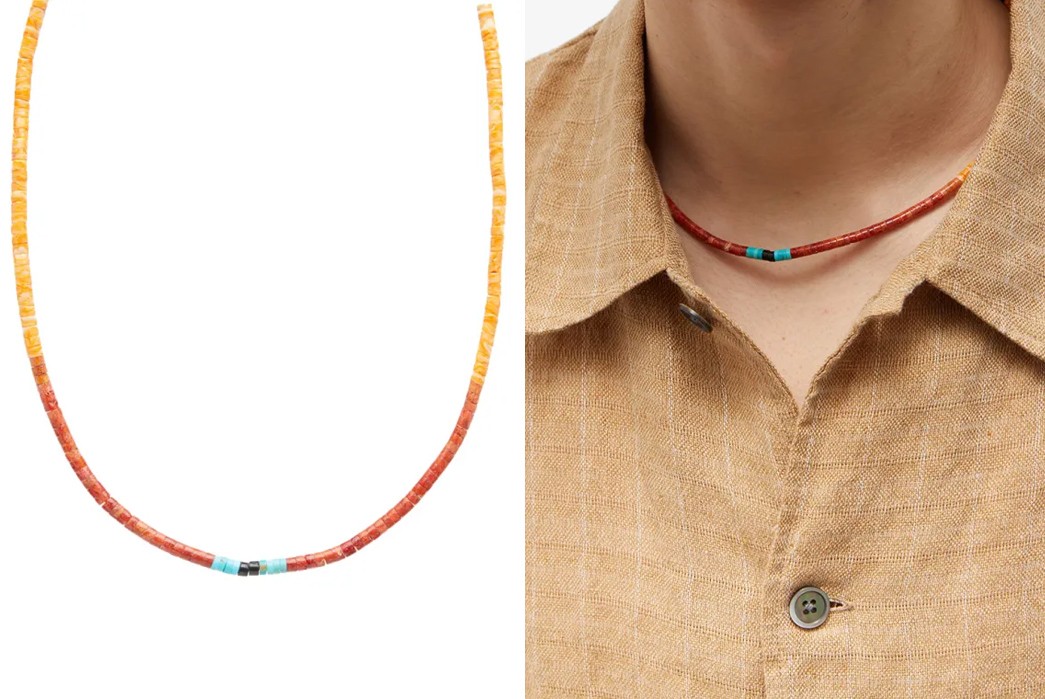
Nature is a major influence on tribes from both sides of the Atlantic. The design of this Beaded Necklace by Mikia speaks to a Saharan oasis or an Arizona spring—harsh environments washed with natural wonder.
Available at End for £139 (~$180)
Red Rabbit Trading Company
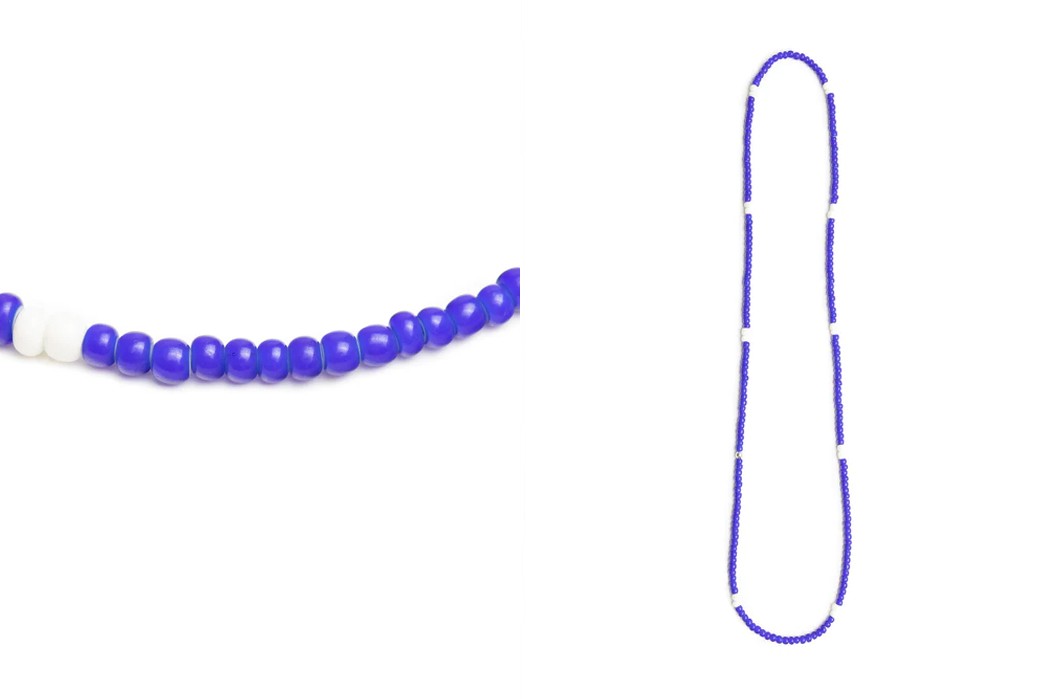
Blue is a powerful color. Whether it’s denim or glass, its royal hues span many mediums and places. Trade beads were no exception to this as the Venetians crafted some incredible glass beads in indigo-turquoise. Red Rabbit is based in New Mexico—home to its own hues of aqua—and their version of an African necklace speaks to simple elegance.
Available at Clutch Cafe for $51.
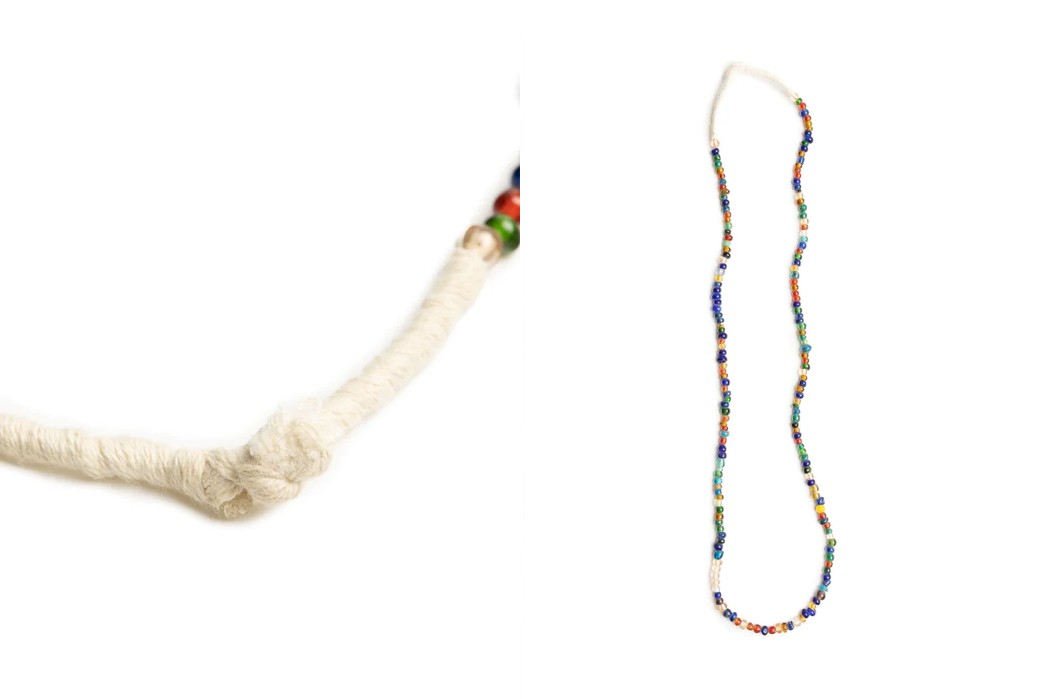
If “vivid” is more your style, Red Rabbit has you covered here as well. Bringing a unique flair to your wardrobe was one of the earliest uses for beads (as far as we can tell) and nothing will bring that quality like these one-of-a-kind necklaces.
Available at Clutch Cafe for $51.



